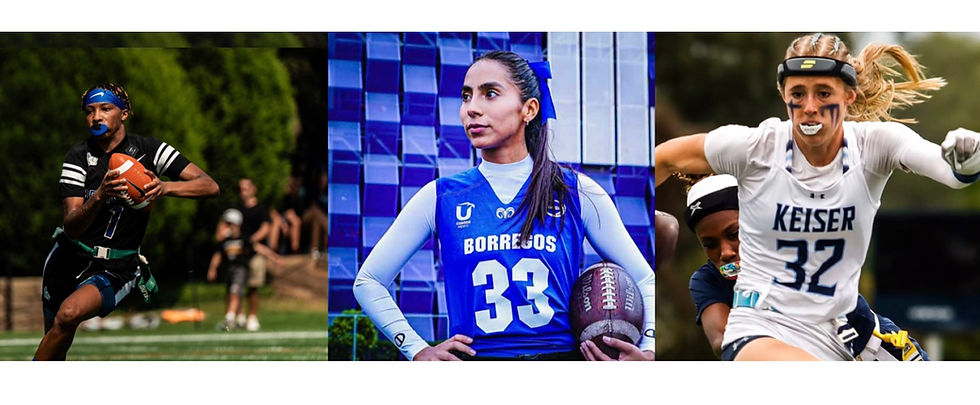The Impact of Alston on Athletes as Employees
- Grant Williamson

- Aug 27, 2021
- 3 min read
Updated: Aug 11, 2022
The United States District Court for the Eastern District of Pennsylvania may have just given some insight into the impact of the Supreme Court’s decision in Alston on the question of whether student-athletes are employees of their universities for purposes of Fair Labor Standards Act (“FLSA”) protection and, of course, for purposes of compensation.
By way of background, Ralph “Trey” Johnson, et al. v. The National College Athletic Association, et al. was brought by five student-athletes who argued that, as student-athletes, they were employed by their respective universities, entitled to compensation, the universities were unjustly enriched by the labor of the student-athletes, and the universities had violated the FLSA.
The Court’s ruling at this stage was on a motion to dismiss from the defendant universities. According to the universities, the plaintiff student-athletes did not allege facts that would establish them as employees of the universities: the universities contended that as amateurs the student-athletes could not be employees. Amateurism has long been a contentious topic in litigation surrounding the NCAA and student-athletes, particularly because of the Nat’l Collegiate Athletic Ass’n v. Bd. Of Regents decision in 1984, but the Alston decision started to significantly chip away at the NCAA’s ability to lean on this loosely, inconsistently defined term to do whatever it wants (e.g., preventing student-athletes from profiting off their name, image, and likeness). The Court here was similarly skeptical of amateurism as a catch-all defense for the NCAA’s actions and shot down the argument that amateurs could not be employees by stating:
[T]he [Defendants] engage in the circular reasoning that they should not be required to pay Plaintiff’s a minimum wage under the FLSA because Plaintiffs are amateurs, and that Plaintiffs are amateurs because the [Defendants] and other NCAA member schools have a long history of not paying student[-]athletes like Plaintiffs.[1]
In rejecting this argument, the Court quoted extensively from Alston and even brought in language from Justice Kavanaugh’s concurrence. (Aside: This concurrence will be increasingly valuable for lawyers bringing cases against universities and the NCAA on behalf of student-athletes). Since the decision was simply a ruling on a motion to dismiss, the outcome is not a monumental win for student-athletes yet. It is important to note that, out of the seven factors the Court identified for finding that the student-athletes were employees, two supported a finding that student-athletes were not employees, two were neutral, and three would weigh in favor of a finding that student-athletes are employees; that issue will be decided in the next stage of litigation. Stay tuned.
But for now, a court has determined that student-athletes were able to allege facts that, if proven, would support the finding that the student-athletes are indeed employees of their respective universities. Plus, amateurism has taken yet another blow in the legal system. And those are important first steps in achieving the next big win for student-athletes post-Alston.
For more analysis of the implications of the denial by the Eastern District of Pennsylvania of the motion to dismiss in this case, Sam C. Ehrlich, a J.D./PhD and Asst. Professor at the Boise State University College of Business and Economics, who originally broke news of the decision, has a great twitter thread: Sam C. Ehrlich on Twitter: "BREAKING: Eastern District of Pennsylvania denies motion to dismiss minimum wage/overtime lawsuit filed by Villanova football players. More to come." / Twitter.
[1] Memorandum and/or Opinion – #55 in JOHNSON v. THE NATIONAL COLLEGIATE ATHLETIC ASSOCIATION (E.D. Pa., 2:19-cv-05230-JP) – CourtListener.com.







EPS Machine EPS Cutting…
EPS Machine Eps Raw…
EPS Machine EPS Recycling…
EPS Machine EPS Mould;
EPS Machine EPS Block…
EPP Machine EPP Shape…
EPTU Machine ETPU Moulding…
EPS Machine Aging Silo…
EPTU Machine ETPU Moulding…
EPS Machine EPS and…
EPS Machine EPS and…
AEON MINING AEON MINING
AEON MINING AEON MINING
KSD Miner KSD Miner
KSD Miner KSD Miner
BCH Miner BCH Miner
BCH Miner BCH Miner
EPS Machine EPS Cutting…
EPS Machine Eps Raw…
EPS Machine EPS Recycling…
EPS Machine EPS Mould;
EPS Machine EPS Block…
EPP Machine EPP Shape…
EPTU Machine ETPU Moulding…
EPS Machine Aging Silo…
EPTU Machine ETPU Moulding…
EPS Machine EPS and…
EPS Machine EPS and…
AEON MINING AEON MINING
AEON MINING AEON MINING
KSD Miner KSD Miner
KSD Miner KSD Miner
BCH Miner BCH Miner
BCH Miner BCH Miner